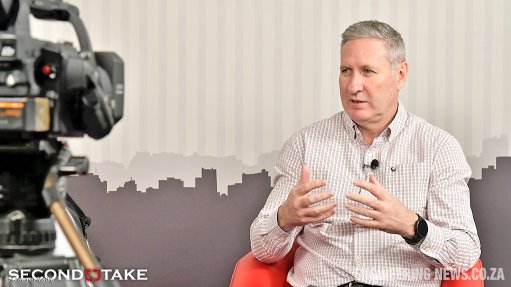GIS software application manages mining’s environmental impact
In response to mining companies’ moral duty to protect the planet’s natural resources and uplift the societies in which they operate, environmental and social solutions provider Digby Wells Environmental offers the mining industry a geographic information system (GIS) service, which allows for environmental and social information to be integrated to assist in mine planning.
“There is also a legal requirement to protect the environment, particularly in the mining industry,” says Digby Wells, which provides GIS services to assist with this.
GIS enables a GIS specialist to create, integrate, store and edit data, as well as analyse, share and display data. “The analytical capability of GIS is what makes it powerful,” says divisional manager Bradly Thornton, adding that data is separated into layers and linked to an actual location, enabling a holistic view of the environment.
GIS can create holistic visualisations and indicate spatial relationships, which results in sound environmental management and planning. “The benefits of using GIS are that it saves time, decreases costs, improves accuracy and manages environmental planning. “It also features a problem-solving capability,” says Thornton.
He adds that using GIS in environmental planning is important, as it allows for proposed developments to be viewed within a spatial context.
“Data gathered in the field and existing data available on a particular study area can be visualised and assessed in a holistic manner in the context of a proposed development.”
The result of this process reveals spatial relationships and interactions that would often remain undetected. “These findings may result in environmental and cost-saving solutions,” Thornton adds.
Moreover, case studies in site selection and optimisation, which are conducted using GIS, include reactive and proactive site criteria. The reactive criteria are those which are identified as unsuitable and highlight areas that should be avoided, while proactive criteria are identified according to their desirability factors and are, therefore, preferred. A site area is considered in a GIS environment in terms of these criteria to identify the optimal location for a proposed site.
Thornton explains that colour mapping is used to indicate the levels of suitability in various areas on a particular site, shaded with red, indicating a very low suitability, and green, indicating a very high suitability.
The combined analysis, which accounts for the reactive and proactive areas, displays a complete analysis of where infrastructure can be potentially placed on mine sites, taking economic and environmental factors into consideration.
Suitable Applications
Thornton highlights underground coal mining as a sector that could be well suited to Digby Wells’ GIS applications, as coal mining can potentially cause surface subsidence, which is often the result of high extraction or insufficient pillar support.
“The deformation and disturbance of the natural surface result in sinkholes,” says Thornton. They not only damage the land, but can be a safety hazard for people and animals.
In many instances, coal mining companies perform regular aerial surveys, which include light detection and ranging (Lidar) – a method used to determine the relative elevation, with the product being very accurate topographical contours.
Lidar can be used to create digital elevation models (DEM). Comparing the DEMs at different times can show where subsidence has taken place, explains Thornton, who adds that the GIS tool enables a comparison between DEMs, which depicts the location and the degree of surface subsidence.
Further, hyperspectral remote sensing – which collects information about light reflections off the earth from the sky – can be used to identify environmental features and pollutants based on their unique spectral (light) signatures. The hyperspectral remote sensing data is captured from a hyperspectral camera on an aeroplane and stored in a digital data cube, which has a layer for each wavelength band. Remote sensing techniques can be used to identify alien vegetation, manage rehabilitated vegetation on rehabilitated mines and track pollutants.
“The GIS software is an important tool for careful planning of a mining project and helps alleviate the effects of mining on the environment,” says Thornton.
About Digby Wells
Digby Wells Environmental is a South Africa-based company with international expertise in providing environmental and social services for South African and international clients, with the focus predominantly on the mineral resources and energy sectors in Africa.
Article Enquiry
Email Article
Save Article
Feedback
To advertise email advertising@creamermedia.co.za or click here
Comments
Announcements
What's On
Subscribe to improve your user experience...
Option 1 (equivalent of R125 a month):
Receive a weekly copy of Creamer Media's Engineering News & Mining Weekly magazine
(print copy for those in South Africa and e-magazine for those outside of South Africa)
Receive daily email newsletters
Access to full search results
Access archive of magazine back copies
Access to Projects in Progress
Access to ONE Research Report of your choice in PDF format
Option 2 (equivalent of R375 a month):
All benefits from Option 1
PLUS
Access to Creamer Media's Research Channel Africa for ALL Research Reports, in PDF format, on various industrial and mining sectors
including Electricity; Water; Energy Transition; Hydrogen; Roads, Rail and Ports; Coal; Gold; Platinum; Battery Metals; etc.
Already a subscriber?
Forgotten your password?
Receive weekly copy of Creamer Media's Engineering News & Mining Weekly magazine (print copy for those in South Africa and e-magazine for those outside of South Africa)
➕
Recieve daily email newsletters
➕
Access to full search results
➕
Access archive of magazine back copies
➕
Access to Projects in Progress
➕
Access to ONE Research Report of your choice in PDF format
RESEARCH CHANNEL AFRICA
R4500 (equivalent of R375 a month)
SUBSCRIBEAll benefits from Option 1
➕
Access to Creamer Media's Research Channel Africa for ALL Research Reports on various industrial and mining sectors, in PDF format, including on:
Electricity
➕
Water
➕
Energy Transition
➕
Hydrogen
➕
Roads, Rail and Ports
➕
Coal
➕
Gold
➕
Platinum
➕
Battery Metals
➕
etc.
Receive all benefits from Option 1 or Option 2 delivered to numerous people at your company
➕
Multiple User names and Passwords for simultaneous log-ins
➕
Intranet integration access to all in your organisation

















